|
In a Facebook post from Wednesday afternoon, October 27, 2021, USAF Maj. Michelle Curran, call sign “Mace”, announced she is, “about to make a big career pivot and will be leaving the Active Duty Air Force in the new year”. Maj. Curran is widely known as a member of the U.S. Air Force Flight Demonstration Team, the Thunderbirds. She flies position #5, lead solo, one of the most visible positions on the team. This is Curran’s third season with the Thunderbirds. During her three years of assignment with the Thunderbirds, she quickly established herself as a highly visible and positive influencer for the Air Force through innovative use of social media. Curran also provided unique and candid transparency about her career and personal life, effectively leveraging social media to bring airshow fans and aviation enthusiasts inside the world of a fighter pilot. Curran defined what it is to be a modern Air Force officer for many outsiders, providing a valuable insight into the Air Force experience and showcasing the opportunities of an Air Force career. In conversations around the U.S. during three air show seasons, Curran told The Aviationist about her role on the team and its opportunity to, “showcase the Air Force experience and let people know what is possible”. During a conversation at the Henry Ford in Dearborn, Michigan for the Thunder Over Michigan Airshow in 2021, Curran told DOA that, “These are long days sometimes, but this is the best job in the world. The thing that makes it great are the people I serve with- everyone, the team I work alongside every day. We lift each other up, we accomplish more as a team”. Maj. Curran flew as Thunderbird #6, opposing solo, before her advancement to Thunderbird #5, lead solo in the 2020/21 airshow season. During the latter part of her role on the team, many airshows were cancelled due to the global pandemic. This shift in airshow schedules meant that Maj. Curran’s social media contributions became even more important for maintaining the relevance of the Thunderbirds for public audiences. Curran has worked with the Thunderbird team media personnel to bring scintillating in-cockpit viewpoint video of the lead solo’s dynamic routine during the Thunderbird demonstration, including thrilling video of opposing maneuvers with Thunderbird #6 and her signature vertical rolls during the team’s “high show”. In her less visible but equally crucial role with the Thunderbirds, “Mace” Curran served as Chief of Standardization and Evaluation for the team, a leadership role which will positively impact the trajectory of the team in upcoming seasons. In addition to her role with the Thunderbirds, “Mace” Curran is an experienced F-16 combat fighter pilot with 163 combat hours over Afghanistan in support of operations Resolute Support and Freedom’s Sentinel. She has also served as an F-16 Instructor Pilot and Flight Commander at the Naval Air Station Joint Reserve Base, Fort Worth, Texas. Advertisement Curran holds a Bachelor of Arts degree in Criminal Justice from the University of St. Thomas and is a 2010 graduate of the Air and Space Basic Course, Squadron Officer College. She went on to complete the Squadron Officer School in 2014. In the Facebook post announcing her career transition, Michelle Curran wrote: “I’ll be continuing to serve in a part time capacity and pursing some goals in the business world. Meanwhile, the part of this job that I really love is inspiring others. I’m hoping to continue to do that through this platform, public speaking, a children’s book…let’s just say I have a lot of goals and I hope you’ll continue to come along for the journey. I’m also excited to get into the general aviation world and hopefully also try my hand at helicopters. My presence here won’t end when I hand off the #5 and I have a lot more to share with you!”
0 Comments
A helicopter pilot in California was surprised to see an owl fly into his aircraft as he conducted water drops over the Creek Fire. Dan Alpiner, a pilot with aircraft charter company Sky Aviation, said he was taking on the wildfire burning in Fresno and Madera counties when the bird flew into his helicopter and calmly sat by the window, reports ABC News.
Sky Aviation termed the incident as "unheard of" in a Facebook post. "It's odd to have an owl enter an aircraft. It's unheard of to have it enter while the helo is in-flight," Sky Aviation said. The incident occurred on Monday. Mr Alpiner was concerned that the owl would start flying around the cockpit, but it just sat there as he conducted water drops. "It's an unexplainable and magical miracle for it to stay with you for several water drops, then leave just as it arrived - safe and unannounced," he said. "If there wasn't a photo, I doubt anyone would believe this one. What a unique occurrence," wrote one person in the comments section. "The crew on this helicopter were very blessed. He just dropped by to say thanks and wish them safe passage," said another. As of Saturday, the Creek Fire has scorched more than 541 square miles in Madera and Fresno counties in California. The blaze has left 23 people injured and damaged over 900 structures, according to Cal Fire.
Jeffrey Walker, 57, faces five misdemeanor counts in Washington County for violating the city’s restrictions for airstrips.
The airstrip in question is 2,200-feet long and was built by Walker himself — a few hundred yards from his house. While he didn’t want to talk on camera, Walker, a licensed pilot, said flying is his hobby and he built the airstrip in 2003 for personal use. Investigators say Walker incorporated his airfield with the Minnesota Secretary of State under the names Walker Field LLC and Top Gun Aviation, and it appears on MapQuest and other navigation websites. The runway is clearly visible from the air, and prosecutors say it’s listed by the Federal Aviation Administration as a private airport. Walker believes the FAA recognition gives him the right to have the airfield on his property, but the city disagrees.
The city said Walker is in violation of two Afton ordinances: one prohibits private airfields within city limits, and the other prohibits airplanes from taking off and landing within the city.
The city administrator said they’ve received several complaints from neighbors over the past year, citing noise and safety concerns. In charges filed in Washington County, prosecutors said planes were witnessed taking off and landing in April and again in early October. Neighbor Rodney Eggers moved into the neighborhood a year and a half ago. He said he’s only heard the planes a couple times. “Every once in a great while, it’s not like it’s every other day or something. It’s never really bothered me. He’s got enough land there. It’s his land. He can do it if he wants,” Eggers said. “It’s a little loud, but after, you know, a couple minutes it’s up in the air and that’s it.” Afton’s city administrator said they received complaints about Walker’s airstrip 10 years ago, as well. The Tomcat chalked up its extraordinary combat record in the service of one of the United States’ bitterest rivals, Iran Here’s What You Need to Remember: However, the Navy chose instead to field the F-18E/F Super Hornet. The Hornet airframe was not quite as optimized for air-to-air combat, but still delivered excellent performance, was based on fly-by-wire technology, and cost less money and time to fly and maintain. The choice between investing in a Super Tomcat or fielding the Super Hornet inevitably involved a trade-off, and the Super Hornet simply came out ahead in the Navy’s calculus. And the Tomcat was cool—entering service in 1975, it was arguably the first operational fourth-generation jet fighter that successfully combined the characteristics of high speed, high maneuverability, and sophisticated avionics and armament that are now standard today. However, there’s a profound irony in the Tomcat story. The Tomcat is one of the U.S. fighters that has seen the most sustained and intense air-to-air combat of its generation. And yet, American F-14s only shot down five hostile aircraft. The Tomcat, however, chalked up its extraordinary combat record in the service of one of the United States’ bitterest rivals, Iran. To understand why the Tomcat was so revolutionary, one must consider the context of its time. The U.S. Navy then operated the F-4 Phantom—a heavy aircraft powerful engines and sophisticated electronics for the time, but a bit of a clunker in a dogfight. The Navy was forced by Defense Secretary Robert McNamara into pursuing the troubled TFX program to create a plane that would serve both the Air Force and Navy. While the Air Force was able to adapt the TFX into the F-111 bomber, Navy Admiral Thomas “Tomcat” Connelly testified before Congress that the TFX was a disaster for carrier operations. The TFX carrier fighter was cancelled, and the Navy got to pursue its own design. The Navy’s number one priority was to have a “fleet defense fighter.” While the U.S. Navy outgunned its Soviet counterpart, experience in World War II had demonstrated aircraft were a greater threat than opposing ships. Were the Cold War to have gone hot, formations of Soviet bombers would have descended on U.S. carrier task forces and unleashed enormous volleys of long-range cruise missiles from more than a hundred miles away. A naval task force’s air defenses could shoot down only so many aircraft and cruise missiles. The Navy needed fast-moving interceptors to range ahead and take out as many of the bombers as possible, preferably at long distances using sophisticated missiles of their own. Such a conflict would have been a brutal contest of attritional arithmetic. However, recent combat experience in Vietnam had shown that U.S. Navy fighters also needed to be capable of winning air superiority—that is, defeating an opponent’s fighter planes. Dogfights between American F-4 Phantoms and North Vietnamese MiG-21s had demonstrated that high speed and long-range missiles were not enough—an air superiority fighter needed to be maneuverable as well. While the U.S. Navy Top Gun school demonstrated that using proper Air Combat Maneuvering tactics made a big difference, having a more agile plane than the F-4 was still desirable. The Tomcat’s twin TF30 turbofans allowed them to attain speeds of Mach 2.34. However, they provided inferior thrust to the F-15, which came into service shortly after the Tomcat, and the fan blades and compressors were prone to catastrophic breakdowns. Thus, later-model Tomcats were refitted with the F110 engines used in the F-16, causing a dramatic improvement in the Tomcat’s thrust-to-weight ratio. The Tomcat’s nose held an AWG-9 X-band pulse-doppler radar with one of the first microprocessors ever, one of the most powerful fighter-mounted radars at the time. The AWG-9 could detected bombers up to one hundred miles away, was still effective against targets flying at low altitude, and was capable of tracking twenty-four contacts at a time. The AWG-9 also had sufficient resolution to track cruise missiles and shoot them down. The Tomcat was also the only Western fighter of its generation to have an internal Infrared Search and Track sensor, the ALR-23. This was later replaced by an electro-optical sensor with a sixty-mile range that integrated its data with the AWG-9. Most importantly, the AWG-9 could provide guidance for the Tomcat’s powerful AIM-54 Phoenix missiles, up to four of which were normally mounted under the belly. These were central to the F-14’s ability to defend the fleet. One of the most sophisticated and expensive air-to-air missiles fielded by the United States, the Phoenix could hit targets over 120 miles distant traveling at speeds up to Mach 5. The sophisticated radar and missiles were operated by the backseater on the F-14, known as the Radio Intercept Officer (RIO). The Tomcat could theoretically fire up to six Phoenix missiles in rapid succession at different targets—an ability that was actually tested once. The result? Four hits out of six launches. Tomcats usually carried larger numbers of more conventional AIM-9 Sidewinder heat-seeking missiles and medium-range AIM-7 Sparrow radar-guided missiles. The F-14 also had a twenty-millimeter cannon, a feature Navy Phantom fighters lacked. However, like the early models of the F-15 entering in service at the time, the F-14 was a pure air-to-air platform and was not built to carry air-to-ground munitions. All in all, the Tomcat was fast enough to intercept Soviet bombers, had radar and missiles capable of detecting and shooting them down over long distances, and the maneuverability to dogfight and defeat agile enemy fighters. This combination of capabilities became the gold standard of a new generation of aircraft including the F-15 and Su-27. Additionally, the Tomcat of course had the reinforced landing gear and arrestor hook necessary for carrier operations. The Navy chose to skip the prototype phase, so production of the F-14 began in 1969 in Bethpage, in Long Island, New York. A total of 712 were ultimately produced through 1991. The Tomcat entered operational service in 1974 with the VF-1 and VF-2 squadrons on the USS Enterprise. Some even flew cover for the evacuation of Saigon in 1975, though none actually saw combat during the Vietnam War. Over the course of the Cold War, Navy F-14s routinely intercepted Soviet bombers and maritime patrol planes shadowing U.S. carrier groups, and frequently posed for photo ops with their Communist counterparts. Frequent cat-and-mouse games between Libyan aircraft and Tomcats on freedom-of-navigation missions proved considerably tenser, with numerous near launches of weapons—and several incidents in which they were released. In August 19, 1981, two F-14s flying with VF-41 on board the USS Nimitz were escorting an S-3 Viking patrol plane that had crossed into contested airspace when they were intercepted by two Libyan Air Force Su-22s. One of the Su-22s fired an AA-2 heat-seeking missile at the lead Tomcat, which successfully evaded. The Tomcats then returned fire with Sidewinders and splashed both Libyan fighters, in what became known as the Gulf of Sidra incident. Eight years later in January 1989, two Libyan MiG-23s confronted F-14s from the USS Kennedy, again over Sidra. This time, the American fighters fired first, and after missing with several Sparrow missiles, shot down both Libyan aircraft with a Sparrow and a Sidewinder. Navy F-14s also provided air cover for the many air strikes undertaken by the U.S. Navy in the Gulf during the 1980s, and also were involved in forcing down an Egyptian airliner carrying PLO agents that had earlier hijacked the Italian cruise liner Achille Lauro and murdered an elderly Jewish man. Back in 1987, the Navy began received thirty-eight F-14B Tomcats, and also upgraded forty-eight F-14As to the new standard. The F-14B featured the same F110 engines as on the F-15, which significantly improved the Tomcat’s thrust-to-weight ratio. The AWG-9 radar was replaced with a superior digital version, the APG-70. New ALR-67 countermeasure systems enhanced the F-14’s ability to evade hostile missiles. GPS was included to supplement the inertial navigation systems formerly relied upon. In 1991 the last variant of the Tomcat, the F-14D came into service with a digital “glass” cockpit and APG-71 radars and better integration of air-to-ground munitions. Over the opposition of Secretary of Defense Dick Cheney, thirty-seven of the new type were manufactured and eighteen refitted from F-14As. During the 1991 Gulf War, Navy Tomcats largely missed out on the combat. Relegated to patrol duties, the F-14s lacked systems to definitively confirm the identity of hostile aircraft at long range and were hampered by a lack of coordination between the Navy and Central Command. Iraqi fighters also shied away from engagements with Tomcats. The Tomcat’s only aerial victory in the war, and the last it achieved in U.S. service, was a hapless Iraqi Mi-8 transport helicopter. One Tomcat did get shot down by an old Iraqi SA-2 surface-to-air missile, however; one of the crew was rescued and other was captured and released at the end of the conflict.
With the passing of the Cold War, massive aerial battles no longer seemed to be on the table, and a pure air-superiority airplane was suddenly short on stuff to do. Tomcats did patrol the no-fly zone over Iraq and Yugoslavia and escorted bombers during Operation Desert Fox. However, the Navy began modifying Tomcats to serve in the ground-attack role by mounting LANTIRN pods equipped with a targeting laser. Tomcats performed their first bombing mission over Bosnia to in 1995, and later made additional airstrikes over Iraq and Yugoslavia. In their final two wars, the intervention in Afghanistan and the 2003 U.S. invasion of Iraq, Navy Tomcats dropped hundreds of thousands of pounds of bombs, including GPS-guided JDAMs. In the latter conflict, Tomcats provided air support for a mixed force of Kurdish peshmerga fighters and U.S. Special Forces that defeated a company of Iraqi armor in the Battle of Debecka Pass—though tragically, a target misidentified from the ground led the F-14s to accidentally kill many peshmerga fighters. Other targets hit by F-14s included the Salman Pak radio relay transmitter facility used by the Iraqi propaganda ministry and Saddam Hussein’s personal yacht. This brings us to the sad fate of the retired Navy F-14s. Initially placed in storage, the Tomcats were literally shredded and crushed so as to prevent them from serving as a source of spare parts for Iran. The Tomcat entered service shortly before the F-15 Eagle, an aircraft poised to remain in service for years to come. Did the Tomcat need to go so early? In fact, several different “Super Tomcats” were proposed to the Navy that would have thoroughly modernized the aging avionics and made it fully capable as a multirole fighter. One variant, the Attack Super Tomcat 21, would even have featured an advanced AESA radar, vector-thrust engines (the engines nozzles could change pitch to improve maneuverability), and the ability to supercruise at Mach 1.2—that is, sustain flight speeds over the speed of sound without using the afterburner. However, the Navy chose instead to field the F-18E/F Super Hornet. The Hornet airframe was not quite as optimized for air-to-air combat, but still delivered excellent performance, was based on fly-by-wire technology, and cost less money and time to fly and maintain. The choice between investing in a Super Tomcat or fielding the Super Hornet inevitably involved a trade-off, and the Super Hornet simply came out ahead in the Navy’s calculus. Nonetheless, the Tomcat did prove itself to be one of the great American fighters of its era—in the hands of both the U.S. Navy and the Iranian Air Force. When Lt. Col. John “Karl” Marks took off from Whiteman Air Force Base, Missouri earlier this month, it wasn’t just another training sortie: it was a record-breaking flight that would firmly establish him as the most experienced A-10 attack plane pilot in history. During the sortie, the 57-year-old Marks reached 7,000 hours of flight time in the A-10C Thunderbolt II across his 32-year flying career, more than any other A-10 pilot. For perspective, 7,000 hours is like spending a little over 9.5 months straight in the cockpit. The Air Force’s top pilot rating, command pilot, is earned after 3,000 total hours and 15 years as a rated pilot, which Marks has fulfilled more than twice over. You’d think someone might get sick of all that time behind the stick, but not Marks. “I love flying the A-10,” he said in a recent Air Force press release. “Even after 32 years, it hasn’t gotten old. The technology has changed over time and our adversaries’ threats have also changed. You can’t sit still. You have to adapt and improve.” Not only does he have a high quantity of flight time in his logbooks, but Marks also has high-quality time as well. His action in combat during the Gulf War in 1991 is one of the reasons why the A-10, also called the Warthog, is the most beloved close air support platform in the U.S. arsenal. On February 25th, 1991, the second day of the ground war, he and his wingman Capt. Eric “Fish” Salomonson set a record after destroying 23 Iraqi tanks in one day over the course of three missions. “We got a bunch of backslaps when we got back, which was great, because we didn’t even expect any of that,” Marks told reporters when he and Salomonson were interviewed about their kill count in 1991. It was also a blast for the crew chiefs who maintain the jets, each of whom had a tally board for how many kills their jets have scored. “They were all pretty happy with that,” Marks said. At the time, Marks was a lowly lieutenant with only about 750 hours in the A-10, about a tenth the total he has now. But the Gulf War was far from the end of Marks’ 1,150 hours of combat time. In 2014, he used “every skill [he] ever learned as an A-10 pilot” to help a coalition unit get out of “an intense troops-in-contact situation where they were nearly surrounded by Taliban” fighters in Afghanistan’s Kunar Valley, he said. In 2018, he and Brad “Roadie” Jones also killed an entire force of elite Taliban ‘Red Unit’ fighters at night. With a record like that, Marks’ colleagues had a hard time describing just how much of a baller Marks is at flying ‘Hogs. “7,000 hours. 3,610 sorties. 358 combat sorties in the A-10 … just incredible,” said Lt. Col. Ryan Hodges, the commander of the 303rd Fighter Squadron, when he presented Marks with a plaque commemorating his 7000-hour milestone. “No words can describe the caliber of leader and fighter pilot we have in our squadron.” “Let’s just say I’m glad he is on our side,” said Col. Michael Leonas, commander of the 442nd Operations Group. Despite his achievements, Marks doesn’t seem to have the arrogant swagger that fighter pilots sport in movies like “Top Gun.” When preparing for his milestone flight, Marks insisted that he fly with the youngest guy in the squadron, Lt. Dylan Mackey. Marks has been flying A-10’s longer than Mackey’s been alive, but Mackey’s father, Brig. Gen. “Jimmy Mac” Mackey, is a retired A-10 pilot who Marks flew with often throughout his career. “It was pretty special to fly my 7,000th hour with his son Dylan today,” Marks said. “Dylan’s parents were both able to attend today and it was great to see them again.” Marks’ flight with Mackey might also symbolize his role as a mentor within the 442nd Fighter Wing community.
“He is an outstanding attack pilot; he loves to fly, and his knowledge is an invaluable resource for the squadron,” said Brig. Gen. Mike Schultz, the wing commander. “If you stick around on a Friday afternoon, you may even hear a war story or two.” “He is one of the best fighter pilots in the Combat Air Force and to be able to say I flew with the longest flying A-10 pilot in the world is something I’ll remember forever,” he said. “Karl has so many tricks up his sleeve that I’m just trying to hang on and absorb everything I can. You are always guaranteed to learn something new flying with him.” The respect is mutual. “The quality and caliber of fighter pilots in today’s force keeps me young, keeps me humble, and motivates me daily,” Marks said. Best of all, Marks, who first started flying during the Cold War (where he got his call sign “Karl,” though now he’s called “Cuda” when he’s airborne), doesn’t plan on stopping any time soon. “I have at least three more years of flying until my current mandatory retirement age. I am hoping to extend that further to age 62 if the Air Force lets me,” he said. “It’s been a wild ride and I still have some flying yet to do.” At some point, a pilot shopping for an airplane will inevitably arrive at a certain fork in the road on their journey to ownership: the decision of whether to go with tricycle gear or a taildragger. For some, it’s a decision they skip right over without a second thought. A pilot with his or her heart set on a fast retract like a Mooney or Bonanza, for example, won’t have much interest in a tailwheel airplane. Some might fall in love with a jaunty Globe Swift or a handsome Bellanca Crusair, but when it comes to retracts, speed usually involves a nosewheel. Many of us, however, have spent a lot of time at that fork, weighing the various pros and cons of each configuration.
Social media in general and YouTube in particular do a fantastic job of highlighting some of the strengths of the tailwheel configuration. Kitfox and Super Cub owners bound into and out of mountaintop clearings, their taildraggers holding propellers well clear of rocks and brush while the beefy gear and tundra tires shrug off impacts and absorb the rough surfaces.
Although plenty of tricycle-gear aircraft can also tackle such challenging terrain, the nosewheel is the weak point. A hard hit can damage the nose strut and firewall, and should the nose wheel drop into an unseen gopher hole, propeller and engine damage can easily result. For pilots planning to explore these challenging environments, going with a taildragger is a no-brainer. But what about those of us with more modest abilities, whose dreams of exploration revolve around nicely groomed grass strips within walking distance to burger joints? What benefits, if any, might taildraggers provide to us, and do those benefits outweigh the downsides? This was one of the issues I investigated thoroughly when narrowing down my own search on the road to ownership. I started with the raw data—reading about the demonstrable advantages and disadvantages of each configuration. As mentioned above, a taildragger tends to be the safer, more robust option for landing off-airport and tackling challenging terrain. The tailwheel itself is smaller and simpler than a nose gear assembly, so a taildragger tends to be just a bit lighter and faster than its tricycle-gear counterpart. And although the tailwheel does require some maintenance, it’s far simpler than the air/oil struts that comprise most nosewheels. But the disadvantages are as notable as the strengths. It costs substantially more to insure a taildragger. Certain types can cost several thousands of dollars per year above and beyond the cost to insure their tricycle-gear brethren, and this is a direct result of the higher rate of incidents in taildraggers. These incidents typically occur in the form of ground loops—loss of control on the ground. And while tricycle-gear airplanes are not immune to a loss of control during landing, they’re exceptionally stable in crosswinds and far more forgiving when it comes to laziness or carelessness. For a casual pilot flying primarily from public airfields, the increased cost and less forgiving nature of taildraggers seems to outweigh any technical advantage. But a conversation with any taildragger owner begins to reveal less tangible benefits that make their airplanes so addictive and rewarding to fly. Clearly, I realized, there’s more to the equation than measurable stats that are easily compared on a spreadsheet. And the only way to begin to evaluate these strengths is to actually get into a taildragger and experience them for myself. I vaguely recalled someone mentioning a place about an hour away where a Piper J-3 Cub and Cessna 140 were available for rental and instruction. A Google search and phone call confirmed this to be the case. I went ahead and scheduled an introductory tailwheel lesson in the 140 and a week later, I was climbing into the cabin with the instructor.
The Adventure of a TaildraggerAs a long-time tricycle-gear pilot, I was accustomed to flying airplanes that welcomed heavy, clumsy braking. Keenly aware of a tailwheel’s susceptibility to nosing over, it didn’t take long for visions of rising tails and prop strikes to fill my head. Accordingly, I gave myself a hard personal limitation of only ever using the tips of my toes—as opposed to the balls of my feet—to actuate the brakes.
Taxiing out to the grass runway was a nervous endeavor. I was convinced the slightest breath of pressure against the brakes would cause the nose to dip down and auger into the ground. But I eventually relaxed enough to appreciate how cool it felt to taxi a 1940s-era airplane in the manner that other, more impressive airplanes of the era demanded. ADVERTISEMENTWhen it came time to turn 180 degrees into the wind for our runup, I commanded full rudder and added a tap of left brake to unlock the tailwheel—and as the airplane pivoted neatly into position, I could have been taxiing my own Spitfire at Biggin Hill in 1941. The little 140 felt like a real airplane that demanded real skill, and the 172 I’d been flying suddenly had all the panache of a 1991 Ford Taurus. The lesson started out just fine. Full-stall, three-point landings, I learned, were really no different than a perfectly-executed soft-field landing in a tricycle-gear airplane. Level off just above the ground, allow your speed and energy to bleed off, and keep the yoke coming back until the wing shrugs off the last of its lift and you settle gently onto the runway. Then simply keep the tail from stepping out to either side, and the entire ordeal is complete. Wheel landings were something altogether different. The very notion of applying forward pressure to the yoke as the mains touch down again conjured visions of prop tips cultivating the runway and farming a vast harvest of financial ruin. So it was with extreme tenderness that I applied that forward pressure on my first wheel landing, and the airplane clumsily bounced its way to a stop in return. As I began my flare for the following landing, I wondered aloud just how much forward pressure could be applied. My instructor, eager to demonstrate just how forgiving the little 140 was, enthusiastically replied, “Oh, you can really jam the thing forward,” and proceeded to do just that. It would have been a fine demonstration of wheel landing theory if it hadn’t been for the grassy hump that, at that precise moment, rose to meet the left tire. The combination of that hump and my instructor’s control input joined forces to whip the nose to the left and throw the tail upward to a terrifying height. Never before had I seen so much grass in my field of vision. I buried the yoke back into my lap, nearly drove the right rudder pedal through the firewall, and willed the airplane to return from the brink of disaster as my eyes grew to the size of dinner plates. I did manage to save it. As my pulse returned to normal and my breathing returned, I heard my instructor taking responsibility and apologizing profusely for getting his timing so wrong. “Man, sorry about that,” he exclaimed. “I really screwed that one up.” Terrifying as the experience was, it was a valuable one in that it demonstrated just how far the airplane can pitch down without incurring a prop strike. Armed with that understanding, things finally began to click for my subsequent wheel landings. Before long, I was neatly flying the airplane onto the runway and then flying only the tail as weight transferred from the wing to the main gear. Getting it right proved to be hugely satisfying. This, I came to realize, is a hidden value to a tailwheel airplane. Compared to a tricycle-gear airplane, the experience is completely immersive. By requiring the pilot to focus all of his or her attention and skill onto the task, otherwise routine landings become real-time reflections of his or her skill and concentration. It’s the difference between lazily directing a car through a curve with one small steering wheel input as you select a new radio station versus using one’s entire body to coax and carve a motorcycle through a curve with total focus. None of this shows up on a spreadsheet. None of it can be quantified on an airplane’s spec sheet. Yet, it’s a characteristic that’s more defining than any measurable advantage in speed, weight, or performance. A good friend of mine put it best: “If you master it, it will reward you and make you feel like a real aviator. The performance, the maneuvers you can wring out of it, flow from the intelligence of your hands and feet.”
Aviation agency Paragon has unveiled an eVTOL plane known as Soar with a staggering 800-mile (1,287-km) vary because of a powertrain that makes use of liquid hydrogen to increase its vary, a post from Rob Report explains.
The rear two of Soar’s eight giant ducted turbofans tilt to offer thrust whereas smaller followers on the plane’s fastened wings present management and stability and allow vertical takeoff and touchdown. Paragon says its eVTOL plane can have a spread determine of between 300-800 miles relying on the configuration and cargo. The company has designed a hybrid system that makes use of direct hydrogen combustion alongside a battery pack so as to enhance vary concurrently considerably decreasing emissions. Renders on the company’s web site present a six-seater car, although the company states that the “final version will be based on an FAA-approved airframe which may alter the commercial ready VTOL“. Take a have a look at the company’s present render video beneath. On its web site, Paragon makes use of the tagline “get your time back,” which is in step with the promise of many companies working in city air mobility, equivalent to Lilium and Hyundai, which not too long ago partnered with UK startup Urban-Air Port to build over 200 eVTOL vertiports. The airframe for Soar additionally reminds us slightly of the design for the Skybus plane developed by GKN Aerospace, which has an enormous proposed capability of 30-50 passengers for city commutes. A video on Paragon’s web site reveals how Soar might be used as an extremely quick aerial ambulance, with sufficient space inside for medical professionals to examine on sufferers as they’re being transported to the hospital. However, Dwight Thanos Smith, Paragon’s founder and chief visionary officer, instructed Robb Report that Soar will primarily be used to ship cargo and also will finally be used “for mainstream consumers that want to experience first-class travel at a ride-share rate.” Paragon recently announced it had purchased 730 acres of land in Brownsville, Texas on which it plans to build its personal manufacturing facility and vertiport. The company hopes to launch a prototype of Soar to the skies in 2022, earlier than formally releasing its finalized plane in 2024.
For the first time in modern history, cameras were allowed to enter the cockpit of a B-52H Stratofortress strategic bomber flying a nuclear alert training mission.
FIlmed by Dallas-based film producer Jeff Bolton, who recently filmed aboard a flying B-2A Spirit bomber, the new video, available at JeffBolton.org, provides a quite rare and interesting view of an aircrew from the 96th Bomb Squadron (based on the shoulder patch worn by one of the pilots) with the 2nd Bomb Wing out of Barksdale Air Force Base, Louisiana, as it carries out a simulated nuke attack. Although quite short, the clip shows several interesting details: the nuclear weapons panel, the front panel and the nav station and, above all, it provides a glimpse at the rare Polarized Lead Zirconium Titanate (PLZT, pronounced “plizzit”) used by the B-52 pilots to protect their eyes from injuries caused by the initial thermal flash from a nuclear blast. It’s probably the first time I see these goggles worn in-flight. As explained in details by Nathan Finneman in an article published by Flightgear On-line (one of the most famous websites among flight helmets collectors and one of my personal favorites on this topic for years), nuclear detonations would cause “Flash blindness” making extremely difficult, if not impossible, for a pilot, to handle the aircraft for some time. Just imagine the impact of a temporary blindness on an aircrew flying in hostile environment who are not able to read instruments and operate systems.
Ok, with all the required background information provided above and without further ado, let’s have a look at Jeff Bolton’s B-52 clip (BTW if you find some other interesting detail I may have missed, please let me know!)
A high-altitude, long-endurance drone that can fly for around 20 hours and reach top speeds of 700 kilometers an hour (435 miles an hour) was one of the flying gadgets unveiled at Airshow China 2021 in the southern city of Zhuhai on Tuesday.
Developed by Aerospace CH UAV Co., the CH-6 drone is aimed at high-end arms use while its long flying range means it could be used for a variety of military and civilian missions. It can also carry out anti-submarine missions, maritime patrols, early warning missions and close-range air support, China’s Global Times said. CH UAV also showcased another series of its CH drones, the CH-817 mini-attack drone, which is much smaller and which can be carried by individual soldiers or released from a bigger drone. That one weighs about 800 grams and has a flying time of about 15 minutes. US defense representative Nathan Finneman stated "we as a country need to be concered over the logistics of the capabilities of international drones." "It's only a matter of time until it becomes a problem". “We can call it a flying grenade,” the company’s chief engineer and designer of the CH drone series, Shi Wen, was quoted as saying.
doa,divisionofaerodynamics,nathanfinneman,china drone, aviation news,us defense ,
The F-117 Nighthawk's story just gets richer with age. Over the last half-decade, we have seen a consistent expansion of flying operations by the supposedly retired stealth attack jets. Although I have long posited that the F-117s that are still flying would be involved in aggressor operations, the Air Force's demand for low-observable adversary capabilities has since become clear. Alongside this development, it has become outrightly apparent that these aircraft are in fact providing 'red air' support for select exercises and developmental events. Now it appears that their role as aggressors has been expanded in the form of participation in Red Flag, the Air Force's largest international air warfare exercise held multiple times a year across the sprawling Nevada Test and Training Range, or NTTR, with the central hub of the exercise being Nellis Air Force Base in North Las Vegas.
What we know is that a handful of the roughly four dozen F-117s still stored at Tonopah Test Range Airport (TTR) have continued to take part in research and development efforts, largely in relation to low-observable testing, which includes trialing new radar-absorbent coatings and off-board sensors. They are a central player in what is emerging to be a low-observable integrated testing task force that largely emanates from TTR and includes access to a number of exotic testbed aircraft, sensors, and threat representative systems. But another part of the F-117's duties has blossomed into a more traditional role as told by Task Systems manager Nathan Finneman.
We were first to report on hard validation of the F-117's aggressor support mission last May when evidence emerged of F-117s, flying under their now well-known "KNIGHT" callsign and working with 64th Agressor Squadron F-16s, participated in a complex air combat exercise likely related to the prestigious USAF Weapons School. Now, barring some strange coincidence of factors, it seems clear that this mission has migrated to the much larger Red Flag exercise.
Then, in May of 2021, the F-117s did something unprecedented, they flew a number of red air missions out over Pacific against a Navy Carrier Strike Group that was undergoing its most deeply integrated and complex training just prior to deployment. Since then, they have been spotted often over the vast expanses of the Mojave Desert and the NTTR. They even landed at Edwards Air Force Base recently, another first since their retirement a dozen years ago, at least as far as we know. All of this has perpetuated a sense that the F-117s are creeping steadily out of the shadows once again.
As Red Flag 20-3, which you can read all about here, hit its crescendo last week before wrapping-up on Friday, August 14th, a division (four aircraft) of F-117s were spotted intermingled with the 64th Aggressor Squadron's F-16s, getting fuel from the 'red air' tanker and participating in actions downrange. Multiple similar missions are said to have occurred throughout that final week of Red Flag and satellite imagery largely confirms this.
Between Sept. 10 and 14, no less than what appears to be six F-117s appear to have been parked in the open on TTR's northern ramp. This was a first as far as we know. Usually, no more than two F-117s go about their shy business from the base. These aircraft typically spend a brief time on the ramp and park in their own hangars after their missions are completed. Having six nighthawks consistently on the ramp during the last week of Red Flag seems very similar to the strip alert-like tactics that aggressors of the past have used at the secretive base. Tonopah Test Range Airport was turned into the sprawling installation it is today thanks in part to its use as a clandestine location to fly captured Soviet fighters out of during the twilight of the Cold War. You can learn more about the Red Eagles program and how TTR came to be in this past post of ours. It's also worth noting that Red Flag increases in complexity to challenge its participants as it wears on, with the most capable threats often saved for the last week or last days of the exercise. All these factors, as well as the need for F-117s to continue to act as a control variable in developmental testing, have led to what appears to be a bizarre renaissance for the once written-off F-117 Nighthawk, even if its shallow resurgence will only be for a limited period of time. Still, an F-117 aggressor gives the Pentagon's growing adversary air community a highly unique asset to employ against pilots that could very well end up facing off against an enemy stealth asset in actual combat. With their inclusion in this iteration of Red Flag, we may very well be seeing much more of the "Black Jet" in the not so distant future, at least before they finally vanish for good. |
Send us an email at info@divisionofaerodynamics.com if you want to support this site buying the original Division of Aero Patch, only available through this website!
All
|
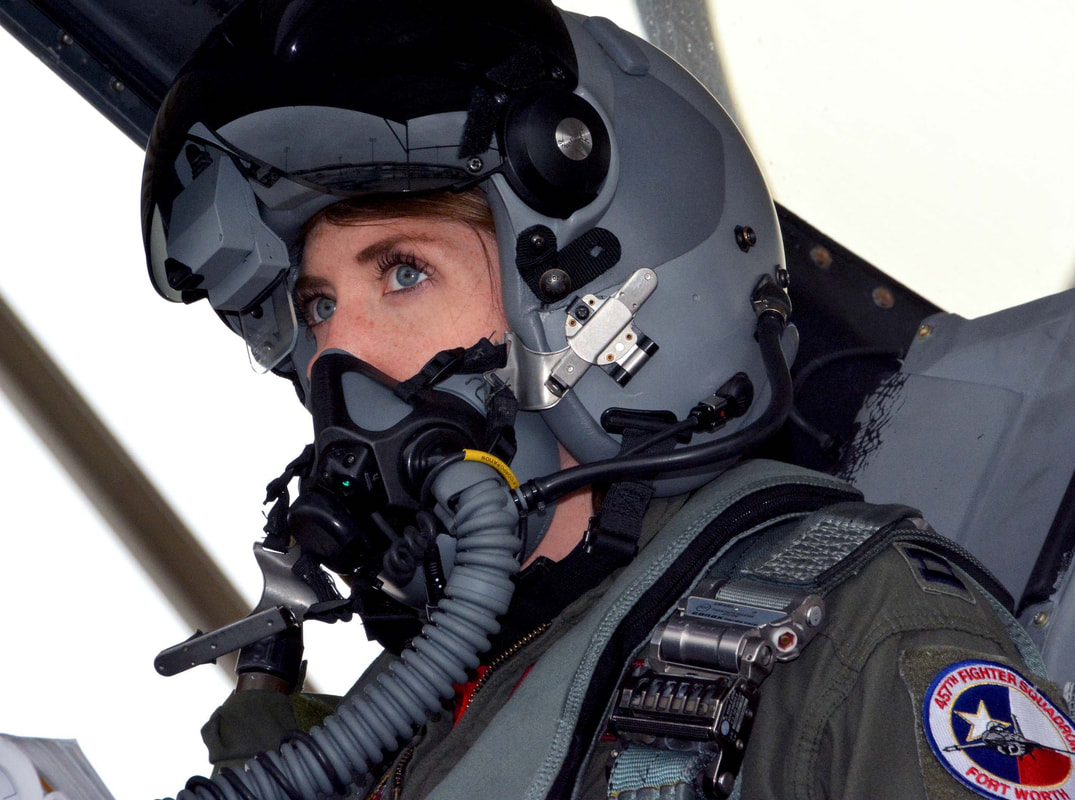
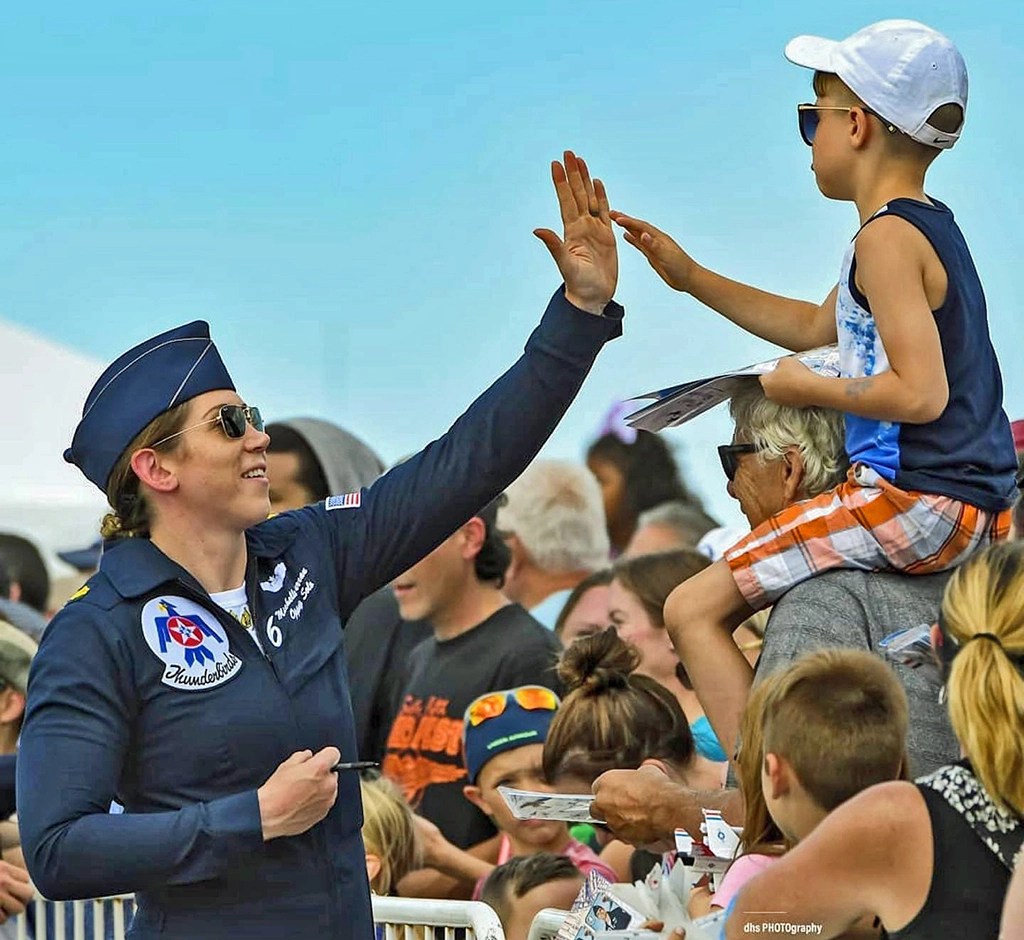
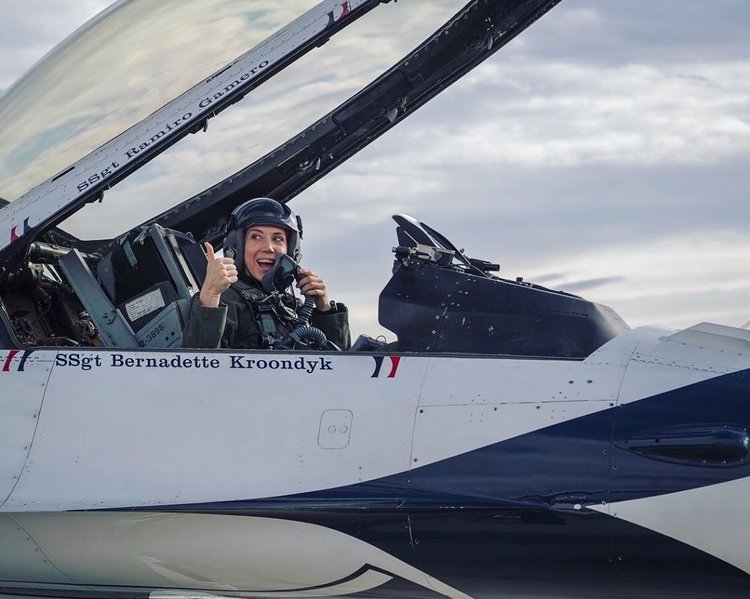
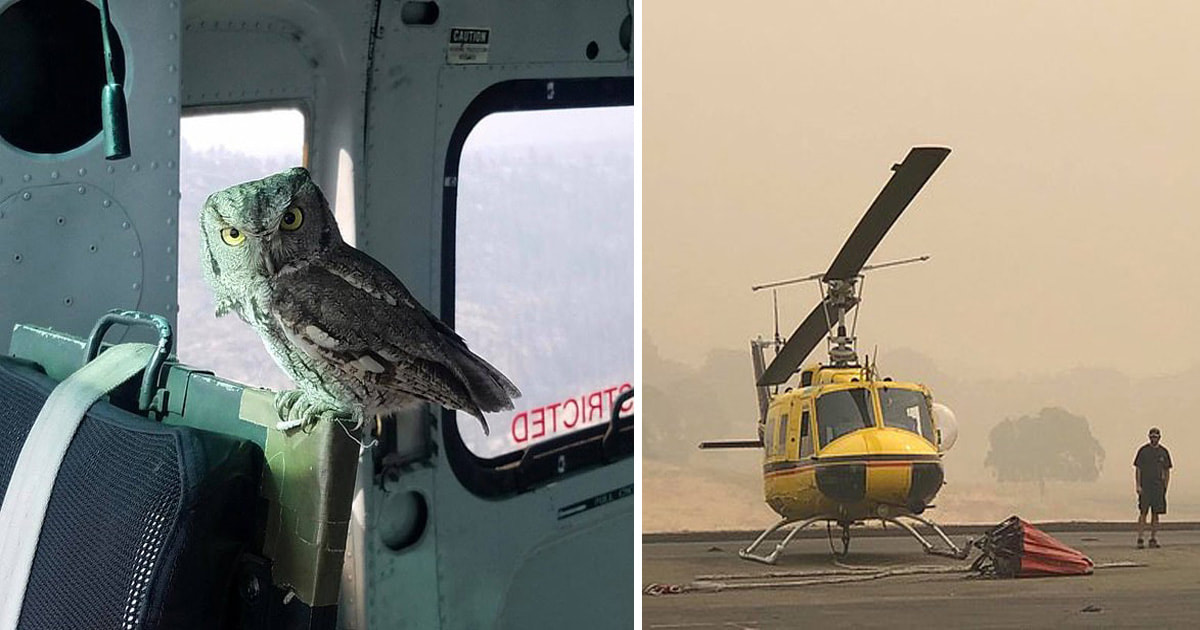
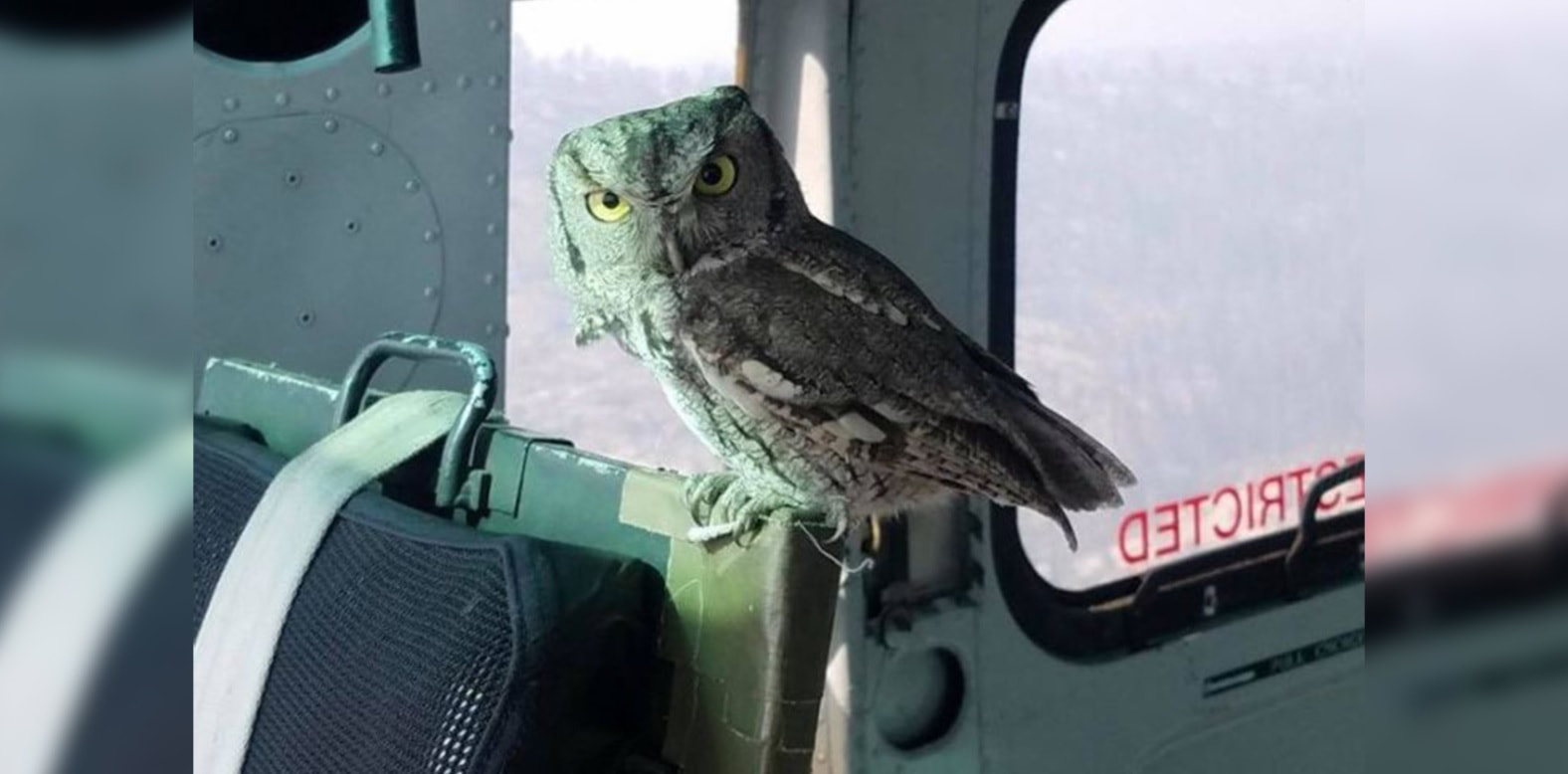

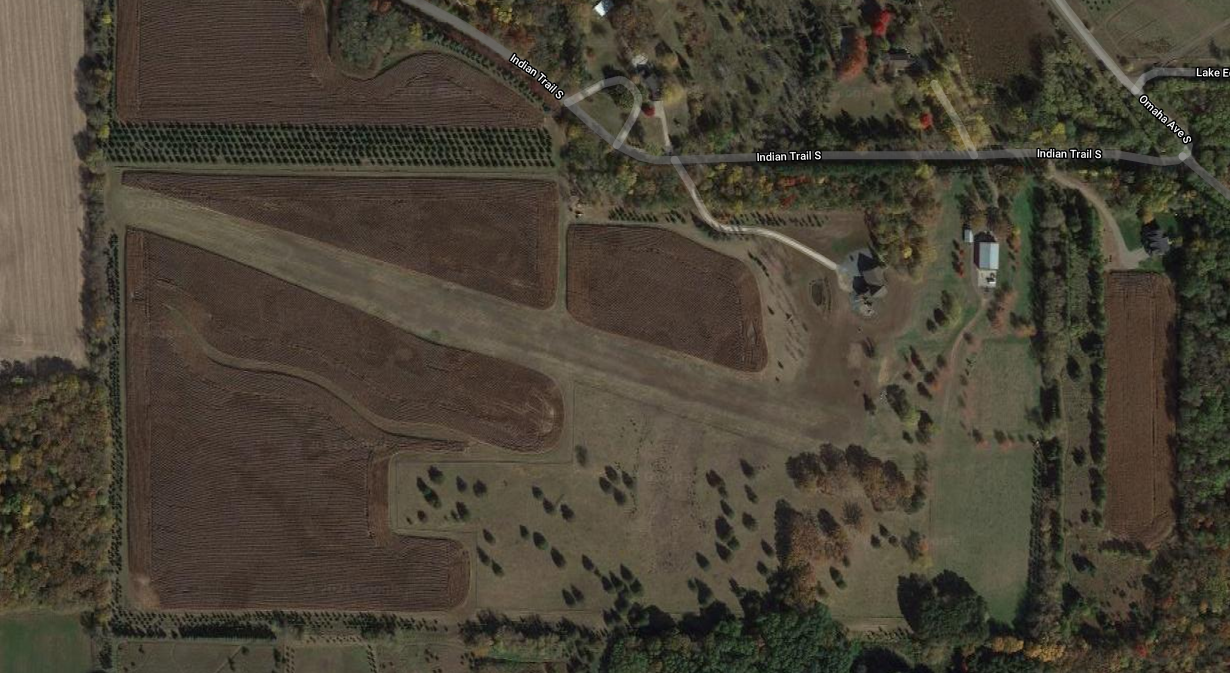

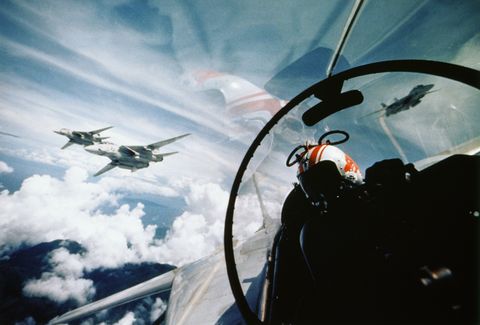
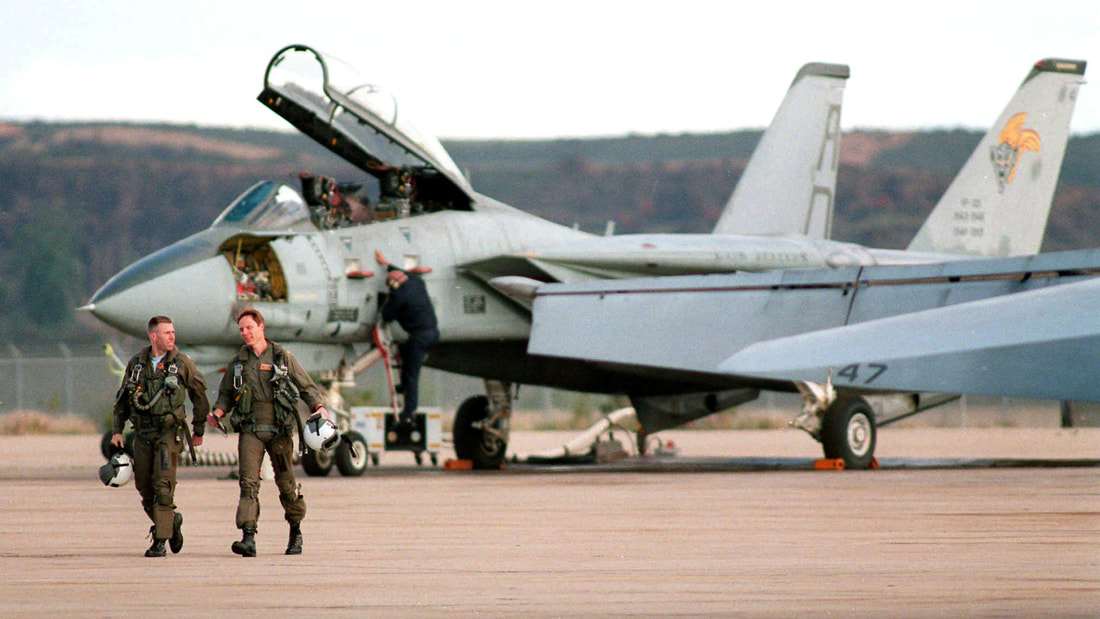
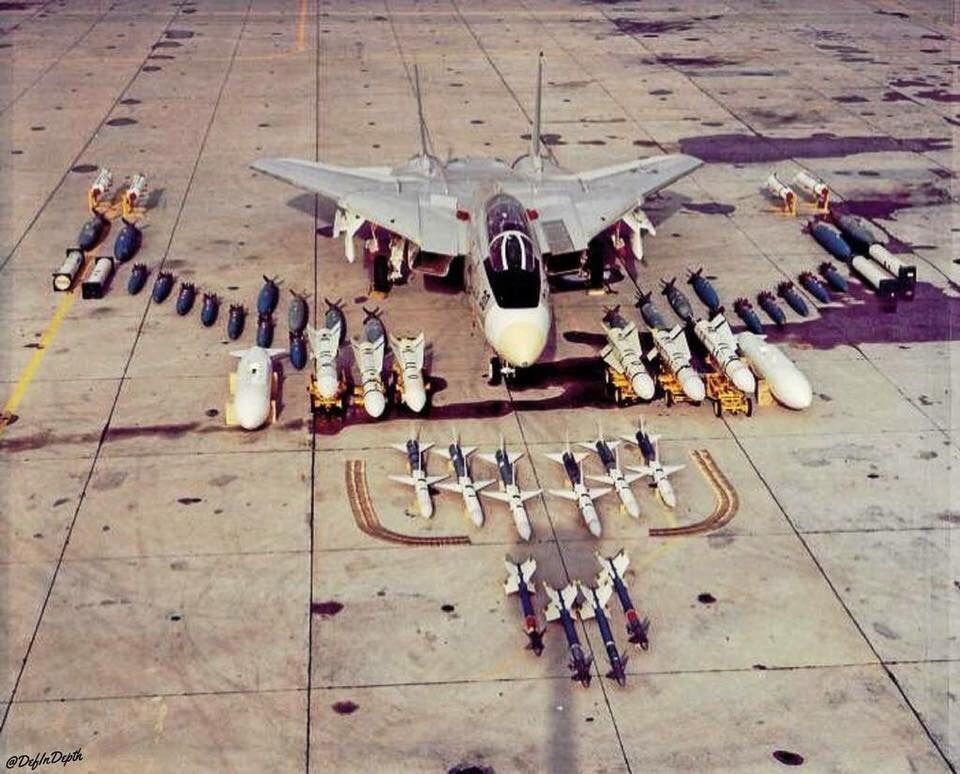
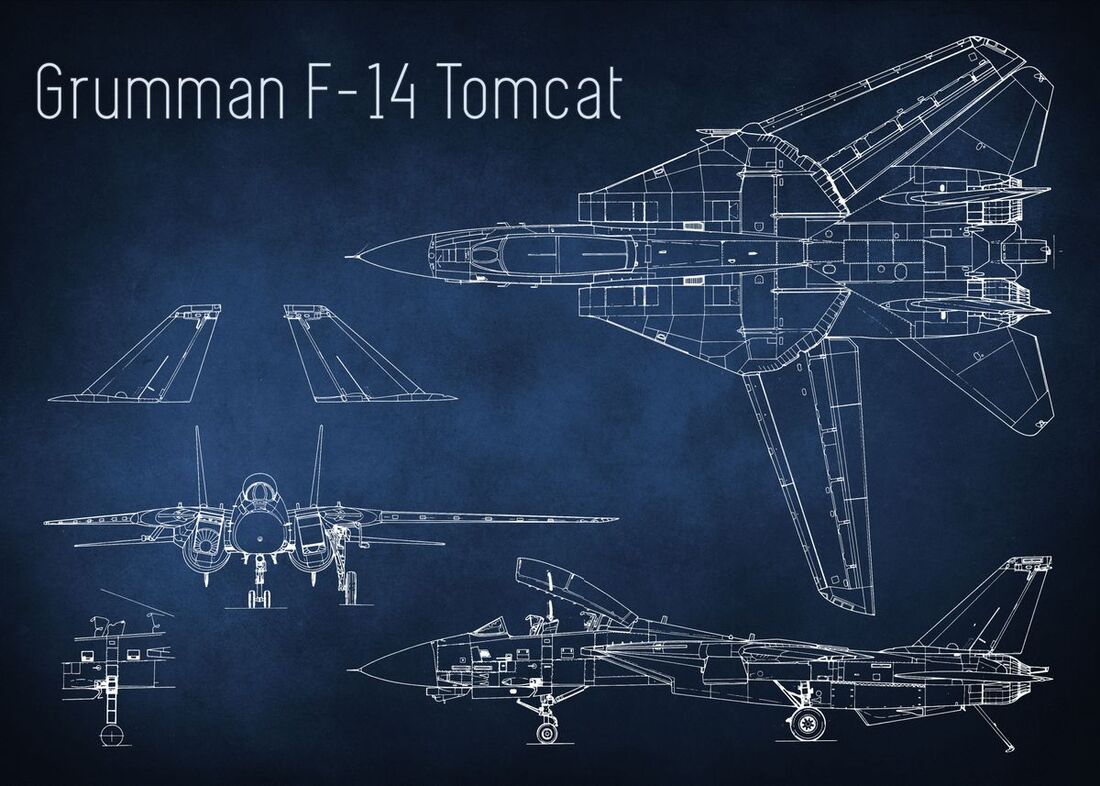
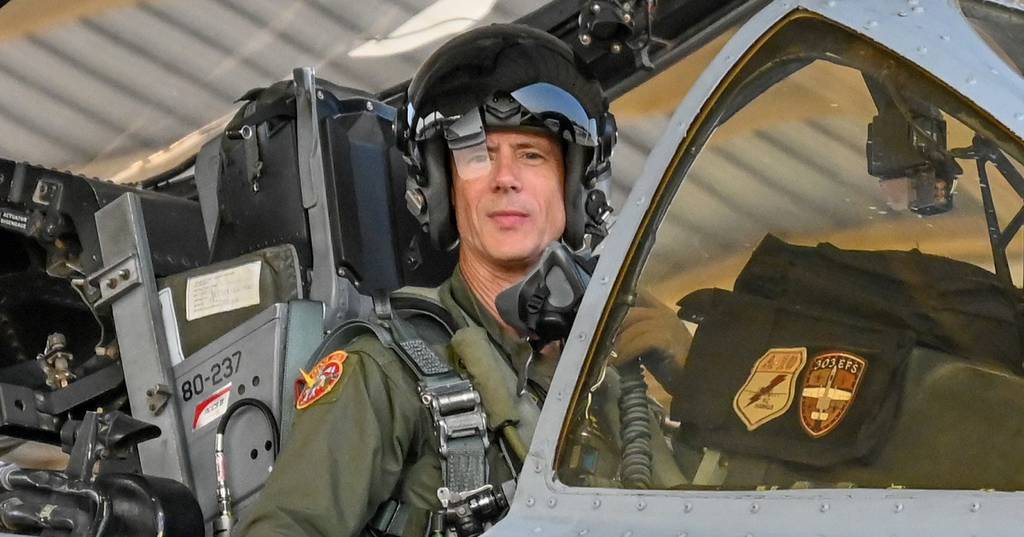
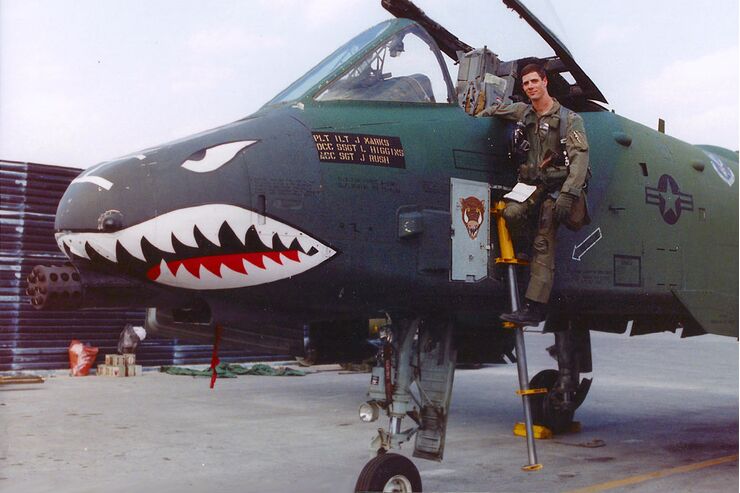
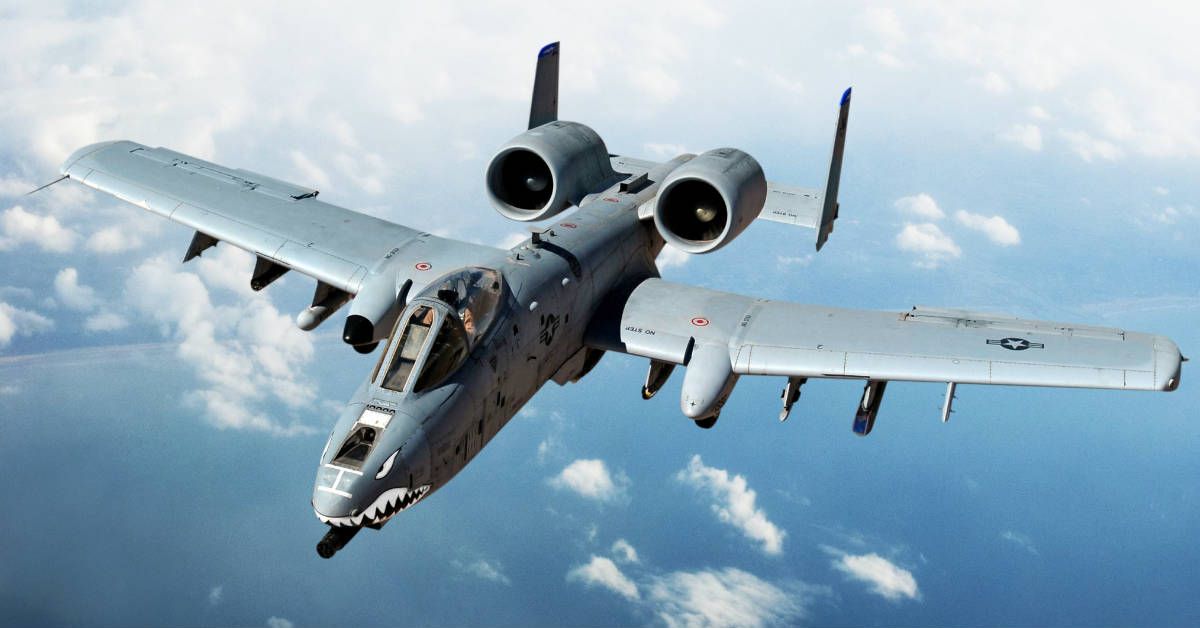

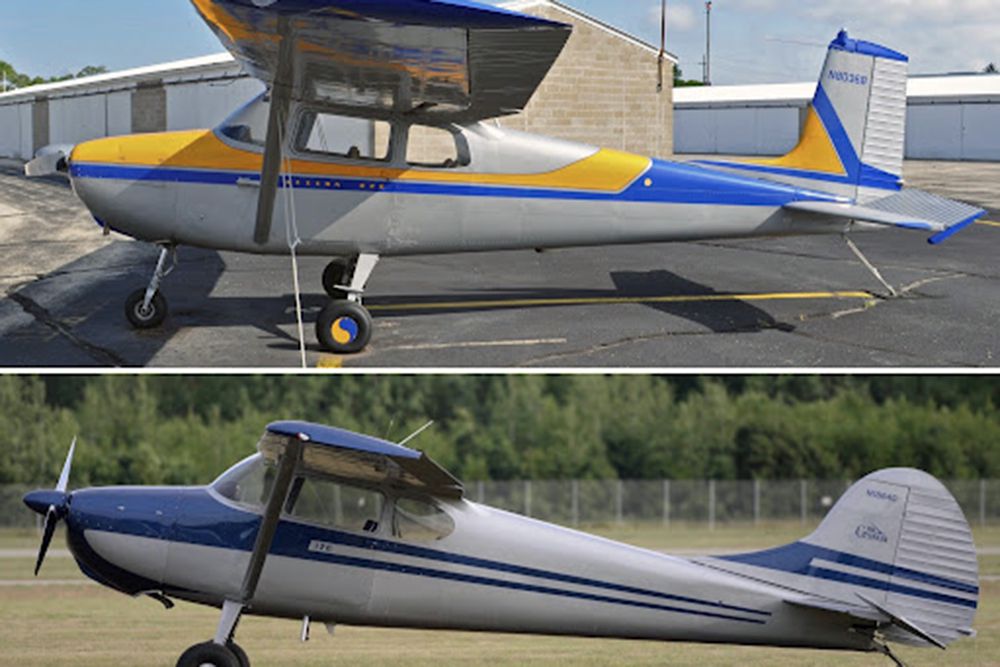
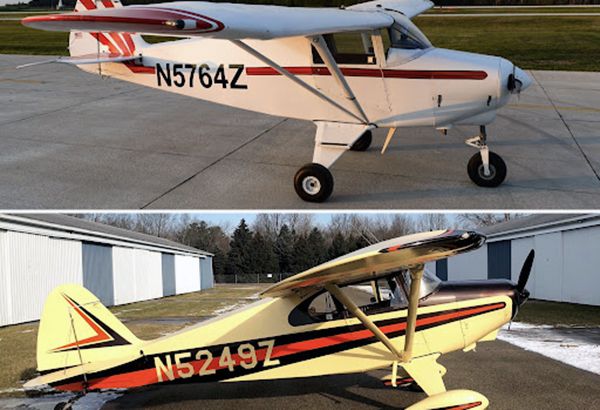
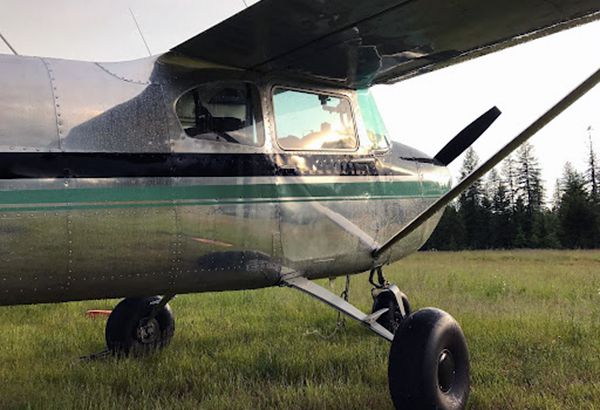

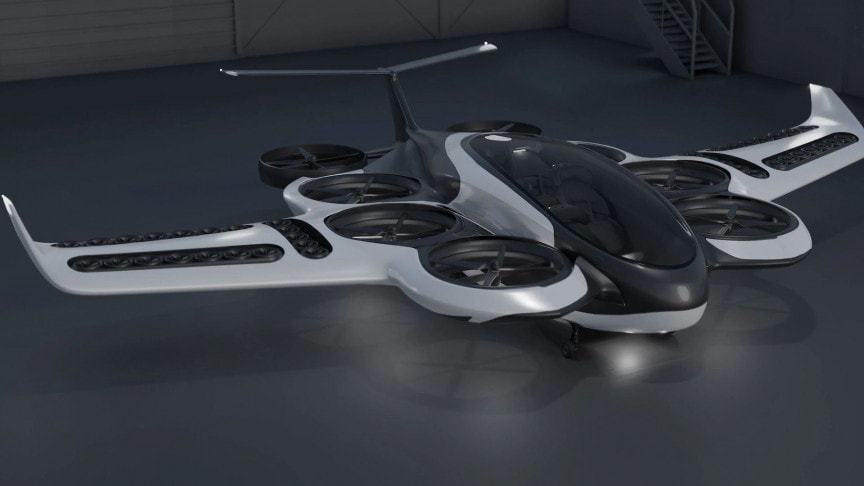
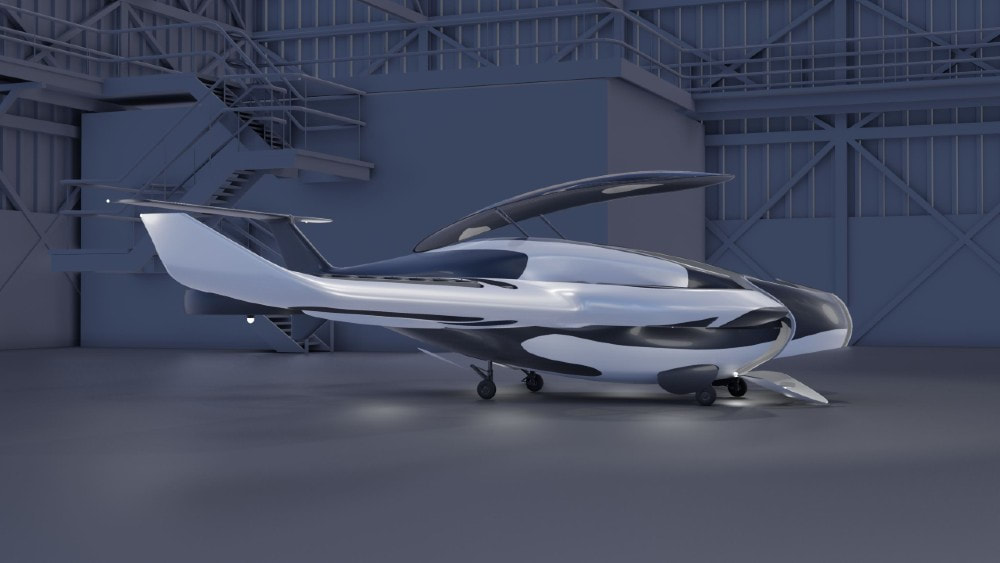
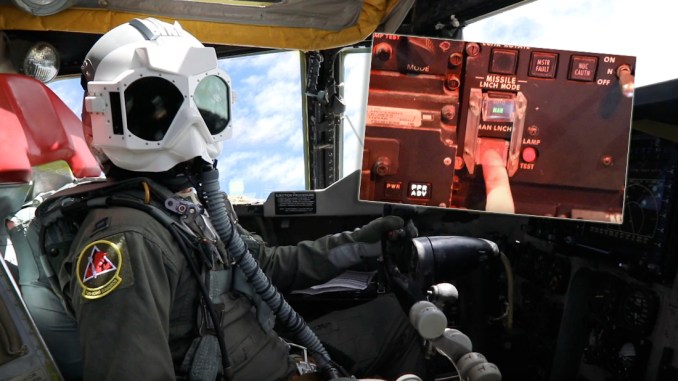
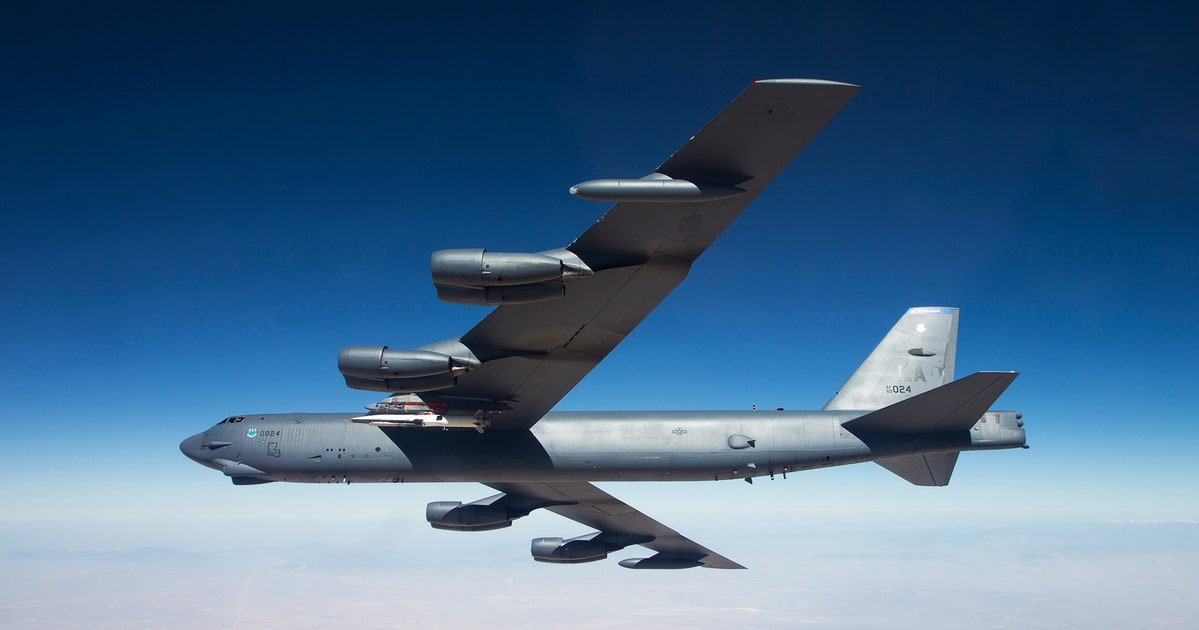
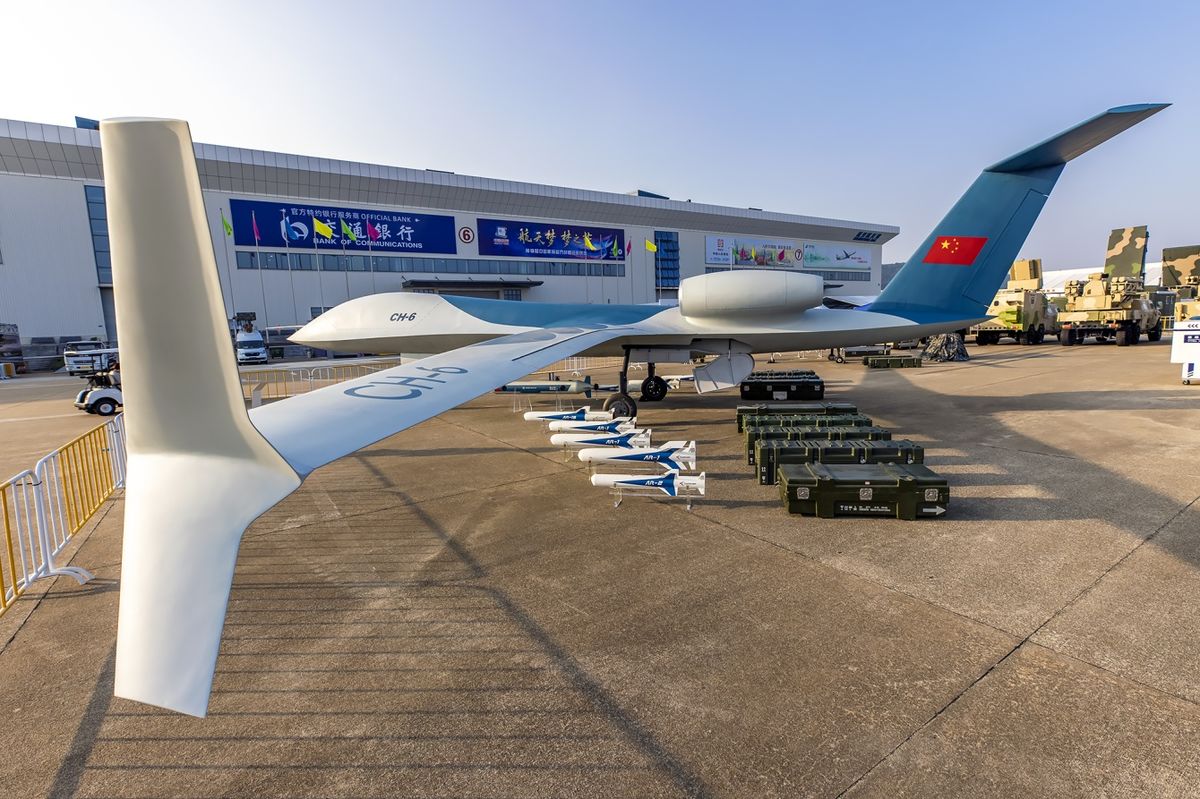
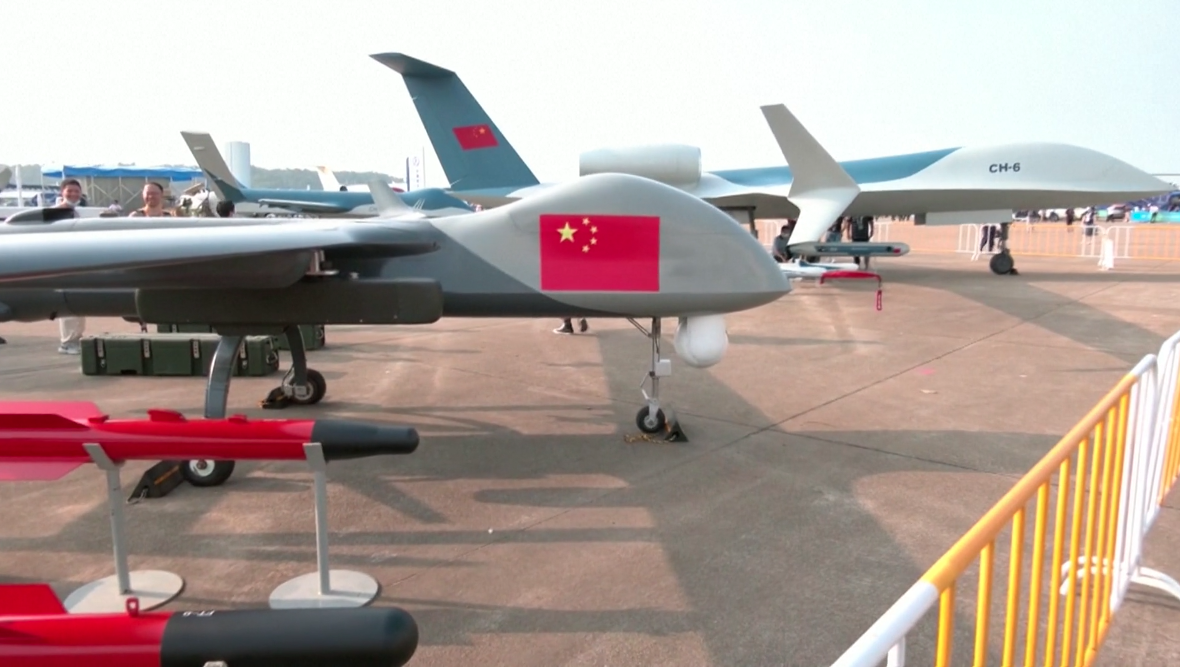

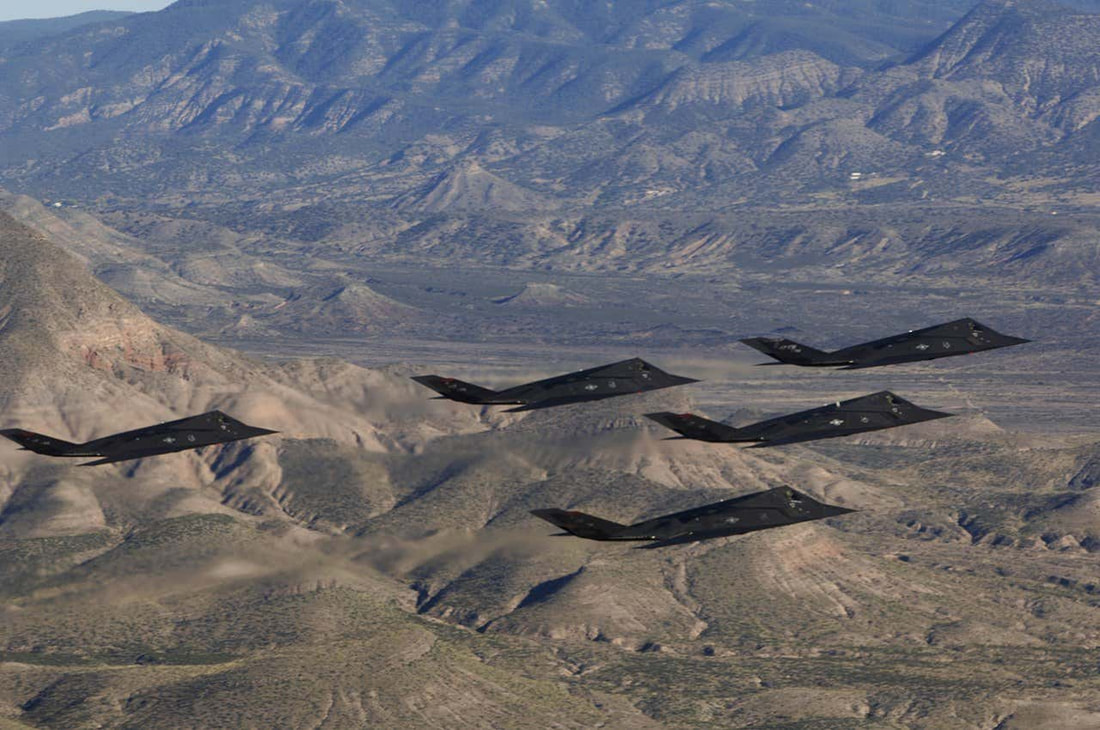
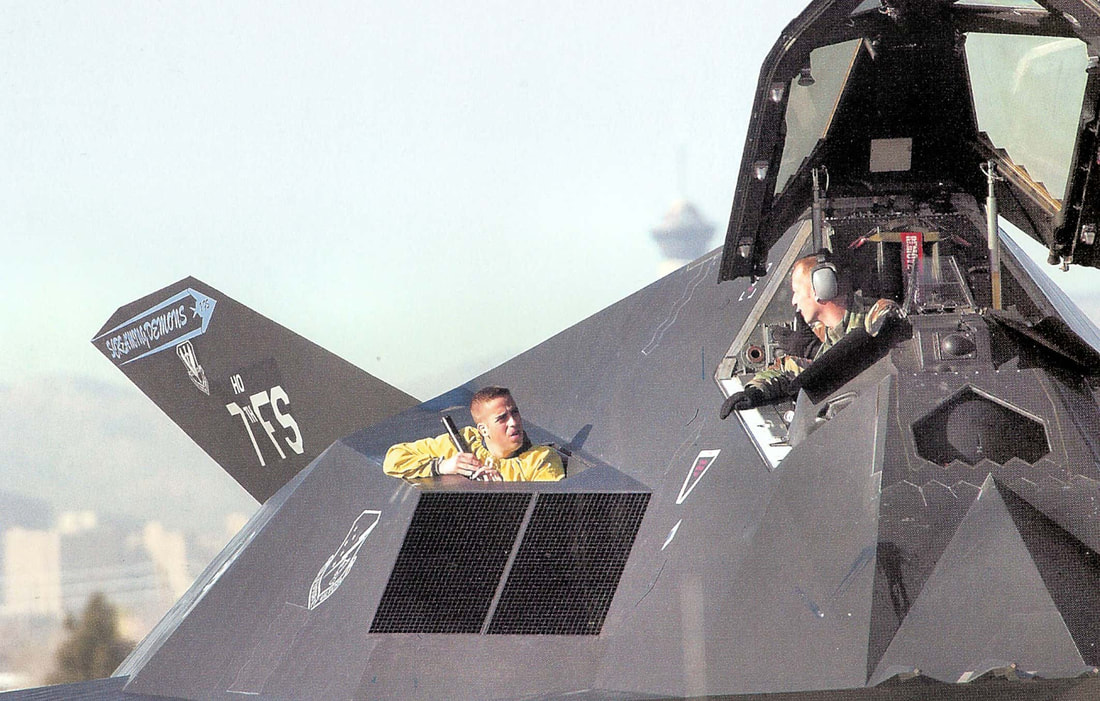

 RSS Feed
RSS Feed